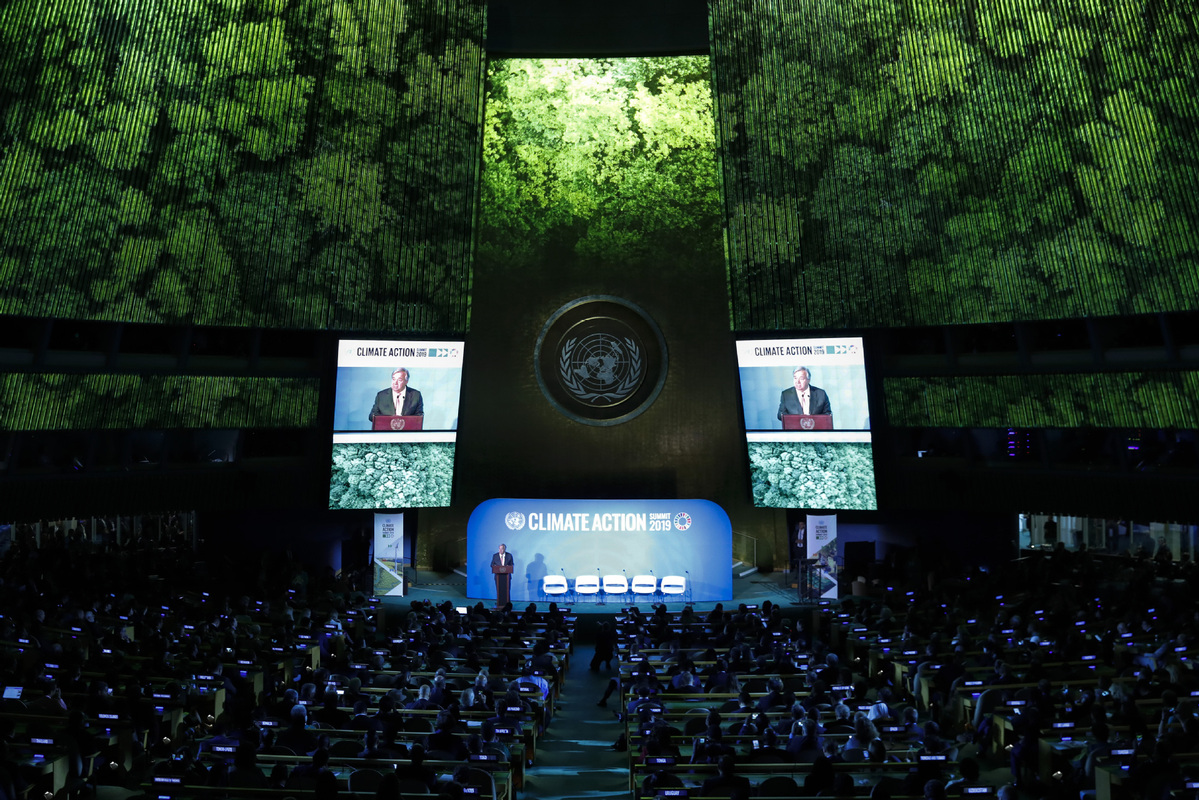Asia-Pacific's new climate reality
By Kaveh Zahedi | China Daily | Updated: 2019-09-24 10:28

On Monday, world leaders gathered at the United Nations in New York for the Climate Action Summit to increase ambition and accelerate action in the face of a mounting climate emergency. For many, this means ambition and action to enable countries to decarbonize their economies by the middle of the century. But that is only half the equation. Equally ambitious plans are also needed to build the resilience of vulnerable sectors and communities being battered by climate related disasters of increasing frequency, intensity and unpredictability.
Nowhere is this reality starker than in the Asia-Pacific region which has suffered another punishing year of devastation due to extreme events linked to climate change. Last year, Kerala, a province in southern India, suffered its worst floods in a century. The floods in Iran in April this year were unprecedented. And floods and heat waves in quick succession in Japan caused widespread destruction and loss of life.
In several South Asian countries, immediately following a period of drought, weeks of heavy monsoon rains this month unleashed floods and landslides. Across Northeast and South Asia, record high temperatures have been set.
Research from the United Nations Economic and Social Commission for Asia and the Pacific show that intense heat waves and droughts are becoming more frequent; unusual tropical cyclones originate from beyond the traditional risk zones and follow tracks not been seen before; and unprecedented floods are occurring throughout the region. Science tells us that the impacts are only going to increase in severity and frequency as greenhouse gas emission concentrations in the atmosphere continue to rise.
The poor and vulnerable are taking the biggest hit. Disasters cost lives and damage livelihoods and assets. Increasing exposure to disaster exposure are increasing child malnutrition and mortality and forcing poor families to take children out of school – entrenching inter-generational poverty. And they perpetuate inequalities within and between countries.
A person a small island state in the Pacific is three to five times more at risk of disasters than a person elsewhere in our disaster-prone region. Vanuatu has faced annual losses of more than 20 percent of its GDP. In Southeast Asia, Laos, Cambodia and Vietnam have all faced losses of more than 5 percent of their GDP. In short, disasters are slowing down and often reversing poverty reduction and widening inequality.
But amid this cycle of disaster and vulnerability lies a golden opportunity for careful and forward-looking investment. The Global Commission on Adaptation has found that there will be more than $7 trillion in total net benefits between now and 2030 from investing in early warning systems, climate-resilient infrastructure, improved dry-land agriculture, mangrove protection, and in making water resources more resilient.
So where can countries in the Asia-Pacific make a start? First, by providing people with the means to overcome shocks. Increasing social protection is a good start. At present, developing countries in the Asia-Pacific spend only about 3.7 percent of GDP on social protection, compared with the world average of 11.2 percent, leaving people vulnerable in case they fall sick, lose their jobs, become old or are hit by a disaster.
In the aftermath of Typhoon Hyan in the Philippines, we saw the effectiveness of social protection, especially cash transfers, but those were only possible because the government could use the conditional cash transfer system and mechanism already in place for poor and vulnerable people.
Second, by lifting the financial burden off the poor. Disaster risk finance and insurance can cover poor and vulnerable people against climate shocks and help them recover from a disaster, such as Mongolia's index-based insurance scheme to deal with the increased frequency of dzud (a severe winter in which a large number of livestock die due to starvation mainly because they cannot graze). Disaster risk finance can also help countries pool the risks as is happening through the emerging ASEAN Disaster Risk Financing and Insurance program.
Third, by increasing investment in new technologies and big data. Artificial intelligence driven risk analytics, as well as a fast combination of sensor and geospatial data, can strengthen early warning systems. Big data, including from mobile phones, can help identify and locate vulnerable populations in risk hotspots which have been the hardest to reach so far, ensuring faster more targeted help after disasters.
Experience around the region has already shown the potential. In India, a combination of automated risk analytics, geospatial data and the digital identity system has helped been designed to identify and deliver assistance to millions of drought-affected subsistence farmers. But much more investment is needed to make technology an integral part of disaster risk response and resilience building.
Climate related disasters are likely to increase in the Asia-Pacific. This is our new climate reality. The Climate Action Summit is the perfect platform to make the commitments needed for helping communities and people to adapt to this reality before decades of hard-won development gains are washed away.
The author is deputy executive secretary of the United Nations Economic and Social Commission for Asia and the Pacific.
























